This article has been reviewed according to Science X's editorial process and policies. Editors have highlighted the following attributes while ensuring the content's credibility:
fact-checked
peer-reviewed publication
trusted source
proofread
Research team observes the processes of memory and cognition in real time
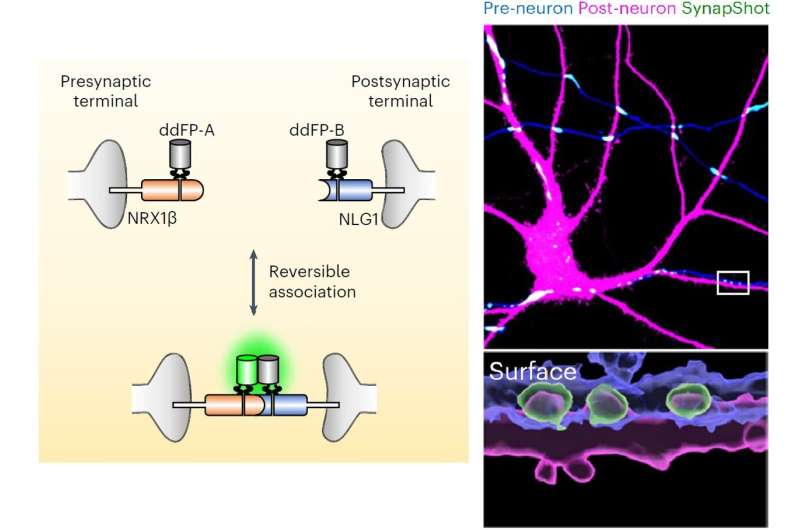
The human brain contains approximately 86 billion neurons and 600 trillion synapses that exchange signals between the neurons to help us control the various functions of the brain, including cognition, emotion, and memory. Interestingly, the number of synapses decreases with age or as a result of diseases like Alzheimer's, and research on synapses thus attracts a lot of attention. However, limitations have existed in observing the dynamics of synapse structures in real-time.
On January 9, a joint research team led by Professor Won Do Heo from the KAIST Department of Biological Sciences, Professor Hyung-Bae Kwon from the Johns Hopkins School of Medicine, and Professor Sangkyu Lee from the Institute for Basic Science (IBS) revealed that they had developed the world's first technique to allow real-time observation of synapse formation, extinction, and alterations.
Professor Heo's team conjugated dimerization-dependent fluorescent proteins (ddFP) to synapses in order to observe the process by which synapses create connections between neurons in real time. The team named this technique SynapShot, by combining the words 'synapse' and snapshot," and successfully tracked and observed the live formation and extinction processes of synapses as well as their dynamic changes.
-
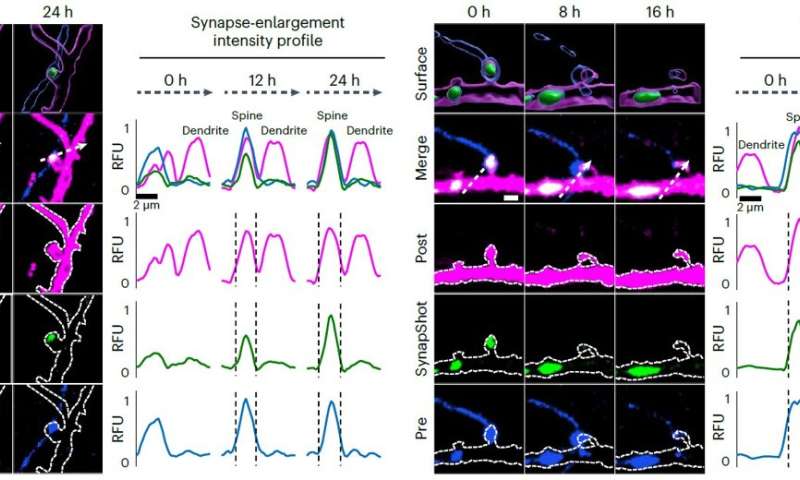
Microscopic photos observed through changes of the flourescence of the synapse sensor (SynapShot) by cultivating the neurons of an experimental rat and expressing the SynapShot. The changes in the synapse that is created when the pre- and post-synaptic terminals come into contact and the synapse that disappears after a certain period of time are measured by the fluorescence of the SynapShot. Credit: KAIST Optogenetics & RNA therapeutics Lab -
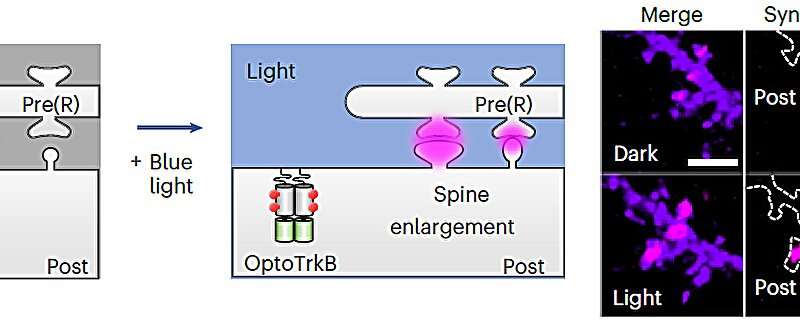
Dimer-dependent fluorescent protein (ddFP) exists as a green fluorescent protein as well as a red fluorescent protein, and can be applied together with blue light-activated optogenetic technology. After activating Tropomyosin receptor kinase B (TrkB) by blue light using optogenetic technology, the strengthening of synaptic connections through signals of brain-derived neurotrophic factor is observed using red-SynapShot. Credit: KAIST Optogenetics & RNA therapeutics Lab
Through a joint research project, the teams led by Professor Heo and Professor Sangkyu Lee at IBS together designed a SynapShot with green and red fluorescence and were able to easily distinguish the synapse connecting two different neurons. Additionally, by combining an optogenetic technique that can control the function of a molecule using light, the team was able to observe the changes in the synapses while simultaneously inducing certain functions of the neurons using light.
Through more joint research with the team led by Professor Hyung-Bae Kwon at the Johns Hopkins School of Medicine, Professor Heo's team induced several situations on live mice, including visual discrimination training, exercise, and anesthesia, and used SynapShot to observe the changes in the synapses during each situation in real-time. The observations revealed that each synapse could change fairly quickly and dynamically. This was the first-ever case in which the changes in synapses were observed in a live mammal.
-
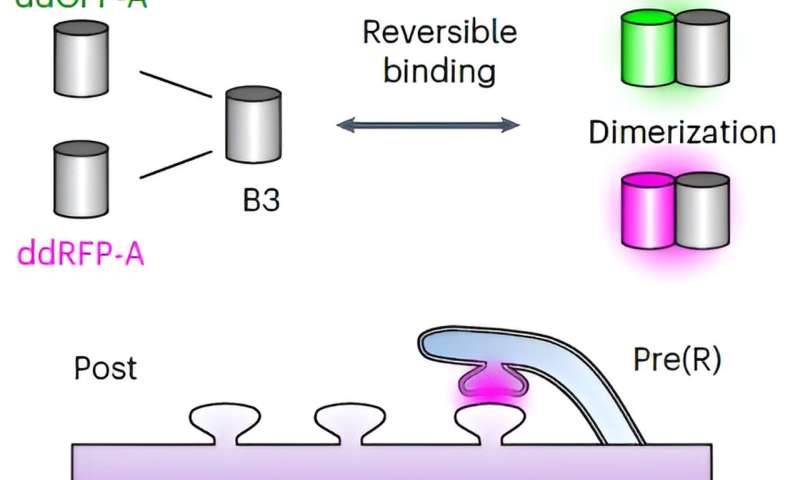
Simultaneous use of green-SynapShot and red-SynapShot to distinguish and observe synapses with one post-terminal and different pre-terminals. Credit: KAIST Optogenetics & RNA therapeutics Lab -
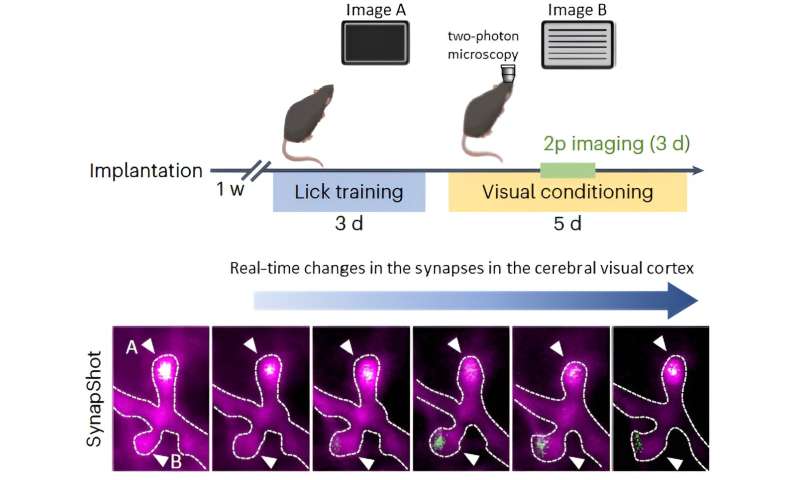
Micrographs showing real-time changing synapses in the visual cortex of mice trained through visual training using in vivo imaging techniques such as two-photon microscopy as well as at the cellular level. Credit: KAIST Optogenetics & RNA therapeutics Lab
Professor Heo said, "Our group developed SynapShot through collaboration with domestic and international research teams and have opened up the possibility for first-hand live observations of the quick and dynamic changes of synapses, which was previously difficult to do. We expect this technique to revolutionize research methodology in the neurological field and play an important role in brightening the future of brain science."
This research, conducted by co-first authors Seungkyu Son (Ph.D. candidate), Jinsu Lee (Ph.D. candidate), and Dr. Kanghoon Jung from Johns Hopkins, was published in the online edition of Nature Methods on January 8 under the title "Real-time visualization of structural dynamics of synapses in live cells in vivo."
More information: Seungkyu Son et al, Real-time visualization of structural dynamics of synapses in live cells in vivo, Nature Methods (2024). DOI: 10.1038/s41592-023-02122-4



















